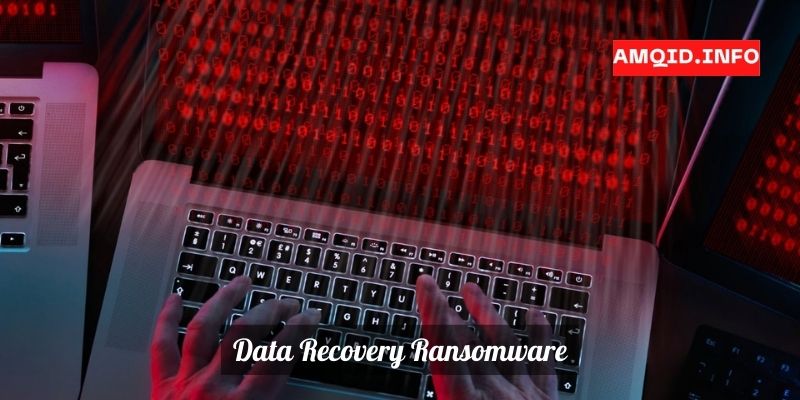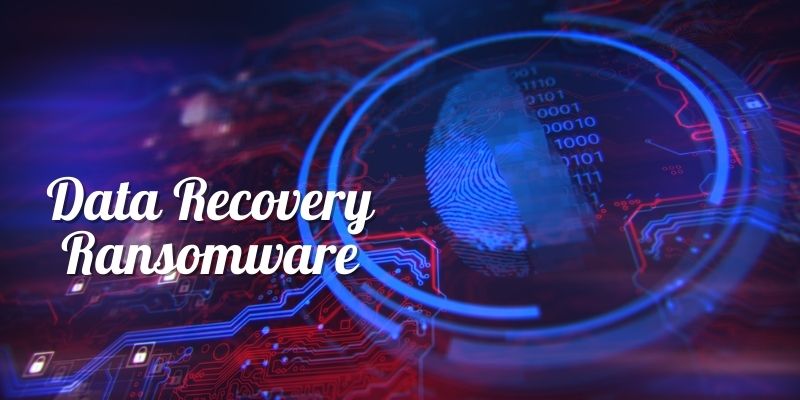In the realm of cybersecurity, Data Recovery Ransomware stands as a formidable threat. This malicious software encrypts your valuable files, holding them hostage until a ransom is paid. Explore the dangers, impacts, and preventive measures to safeguard your digital assets from this pervasive menace by Amqid.info
What is Data Recovery Ransomware

Data recovery ransomware, also known as ransomware data recovery scams, refers to a type of malicious software (malware) that encrypts a victim’s files and holds them hostage until a ransom is paid. In this scenario, cybercriminals gain unauthorized access to a user’s computer or network, encrypt the files, and demand a ransom payment in exchange for the decryption key needed to regain access to the data.
The primary goal of ransomware is to extort money from victims by exploiting their need to retrieve their valuable or sensitive information. The ransomware typically displays a ransom note or message on the victim’s screen, providing instructions on how to make the payment and receive the decryption key.
However, it is important to note that paying the ransom does not guarantee that the cybercriminals will provide the decryption key or that the encrypted files will be fully recovered. There have been cases where victims paid the ransom but did not receive the promised decryption key or encountered other complications during the decryption process.
The best defense against data recovery ransomware is prevention. This includes maintaining up-to-date security software, regularly backing up important data to offline or cloud storage, and exercising caution while opening email attachments or clicking on suspicious links.
In the unfortunate event of a ransomware attack, it is recommended to report the incident to law enforcement agencies and seek assistance from cybersecurity professionals who may be able to help recover the encrypted data or mitigate the impact of the attack.
How does data recovery ransomware infect systems?

Data recovery ransomware typically infects systems through various methods, including:
Phishing Emails: One common method is through phishing emails that trick users into clicking on malicious links or downloading infected attachments. These emails may appear legitimate and often employ social engineering techniques to deceive recipients.
Malicious Websites: Visiting compromised or malicious websites can lead to drive-by downloads, where the ransomware is automatically downloaded and executed without the user’s knowledge or consent.
Exploiting Vulnerabilities: Ransomware can exploit security vulnerabilities in operating systems, applications, or network services. If a system is not properly updated with the latest security patches, it becomes more susceptible to such attacks.

Malicious Downloads: Downloading software or files from untrusted sources, such as torrent sites or unofficial app stores, can introduce ransomware onto a system. These downloads may be disguised as legitimate software or files.
Malvertising: Ransomware can be distributed through malicious advertisements (malvertising), where legitimate-looking ads on websites or within applications contain hidden code that downloads and installs the ransomware.
Remote Desktop Protocol (RDP) Attacks: Cybercriminals can exploit weak or compromised Remote Desktop Protocol connections to gain access to a system and install ransomware.
USB or External Devices: Connecting infected USB drives or other external devices to a system can introduce ransomware if the device contains malicious code.
Once the ransomware gains access to a system, it typically encrypts files using strong encryption algorithms, rendering them inaccessible to the victim. The ransomware then displays a ransom note, usually demanding payment in cryptocurrencies, and provides instructions on how to make the payment to obtain the decryption key.
What are common signs of a data recovery ransomware attack?

Common signs of a data recovery ransomware attack include:
Encrypted Files: One of the primary indicators is the sudden encryption of files on the compromised system. The ransomware modifies file extensions or adds specific file markers to indicate that the files are now inaccessible.
Ransom Note: Ransomware usually leaves a ransom note or message on the victim’s screen or in folders containing encrypted files. This note provides instructions on how to pay the ransom and obtain the decryption key.
Altered File Names: Some ransomware may change file names by appending random characters or adding specific extensions to indicate that the files have been encrypted.
Unusual File Extensions: Encrypted files may have unusual or unfamiliar file extensions that are different from their original formats. These extensions often serve as identifiers of the ransomware variant used in the attack.
Locked Screen or System: Some ransomware strains lock the victim’s screen, preventing access to the operating system or displaying a full-screen warning message, making it impossible to perform regular tasks.

Pop-up Messages or Alerts: Ransomware may display pop-up messages or alerts that demand payment or warn of consequences if the ransom is not paid within a specific timeframe.
Disabled Security Software: Ransomware often attempts to disable or circumvent security software, such as antivirus programs or firewalls, to avoid detection and removal.
Slow System Performance: The presence of ransomware may cause a noticeable decrease in system performance, including slow startup times, unresponsive applications, or frequent crashes.
If you suspect a ransomware attack, it is crucial to disconnect the compromised system from the network immediately to prevent further infection and seek assistance from cybersecurity professionals for proper incident response and mitigation.
Conclusion
The rise of this insidious malware poses significant risks to individuals and organizations. With encrypted files, ransom demands, and potential data loss, prevention and preparedness are paramount. Stay vigilant, implement robust security measures, and educate yourself to thwart these digital extortion attempts.
